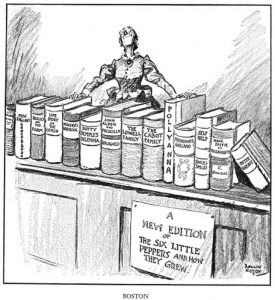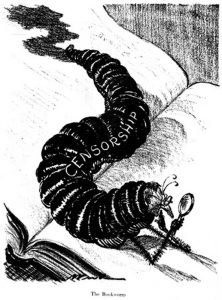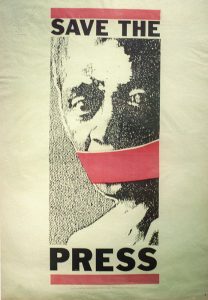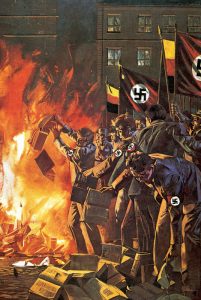We are at the conclusion of the class, as this semester comes to a close, this will be my final post for the class.
Firstly to reiterate the mission statement of our contract.
The purpose of this site is to educate the masses on the historical 1960 banning of J.D. Salinger’s book Catcher in the Rye. The book itself was challenged on the grounds of profanity and the high school instructor was removed from the position afterwards, although this is often considered to be one of the first bannings of the book, we are going to use national context to aid the reader on why the book was banned. As we explore the banning we will take several viewpoints, stemming from sociology to the political action taken after the banning. We plan on using this site to target University of Science and Arts of Oklahoma students as well as those interested in censorship.
Sociological View:
Although, I was unable to find direct research correlated with The Catcher in the Rye, and the three sociological theories presented on Catching Thier Ire. Though to the best of my ability I was able to, the interpretation of the case through functionalism, symbolic-interaction theory, and conflict theory.
Functionalism:
Aforementioned, I could not find any research that correlated this theory with functionalism, thus I had to interpret the case myself with my little granule of knowledge of the functionalist theory. The most troubling part of this section was deciding how did the banning fit into the theory, and I had initially thought it could be viewed as an agent of change. However, it seemed that the banning fits better within the theory, as an idea for keeping ideas in check and to safeguard for change.
Symbolic-Interaction Theory:
Perhaps the easiest of the three theories, the correlation of the theory and banning was much more easier than the others due to this theory focused on the symbols, themes, and motifs in the book.
Conflict Theory:
Perhaps the hardest of the three theories, I could not decide how to approach the theory and banning. Initially, I could not decide who would be what group, and where was the conflict was but overall, I am happy with its result.
Synopsis:
I had to keep this section shorter than I wanted, due to I was not able to spend as much time reading the text as I wanted, and thus I skimmed Catcher in the Rye, more than I would have liked, and when I sat down to write the page I could not remember as much as I would have liked. Thusly, I kept the page as ‘short and sweet’ as I did and referred to other synopses of the piece.
Biography:
Aside from uploading the wrong draft, the biography of Salinger adequately details the account of his life. It was actually much longer than I expected, I had planned for it to only be two paragraphs, due to how private of a life he lived, but there was a good amount of detail online, and I ultimately did leave some lesser details out.
Site Management:
The site management was quite easy, we had chosen the Pique theme, which is the theme, I run on my own WordPress site, and once the pages were uploaded, I threw the site together in a little under an hour with no problem, with the exception of the story map size, but after our reviews and advice from Leah that was an easy fix.
Hard Deadline(s):
- February 28 : Have a completed plan for the website
- We completed this on schedule
- March 9 : Complete Interviews of Instructors (Finck, Brown)
- Completed on schedule and got directed to the other professors on campus
- March 14 :
- Synopsis and Biography Completed
- Completed on Schedule
- Sociological Context Completed
- Completed on Schedule and was in an offline doc
- Synopsis and Biography Completed
- March 23 : Start Site Draft
- Completed on schedule
- March 30 : Fill in noticeable gaps
- Worked as needed
- April 6 : Finalize website map and page locations
- Completed on Schedule
- April 9 : Rough Draft of Site
- Completed
- April 20 : Edit Site
- Edits were not made till the following week due to finals.
- April 27 : Finalize edits
- Completed on Schedule
- April 30 – Final Draft of Site
Tools:
WordPress:
This was used and will be used to convey the findings of our research to the public at large
Coggle:
Coggle was a really great tool for planning, out the site overall, and the initial outline of the task we need to complete.
OneNote:
I find OneNote an invaluable tool as a student, and kept the drafts of my pages in my personal account, although for some reason we were unable to get it to function on Max’s end.
Online Databases:
All the online databases we had access to were quite invaluable, as it allowed us to get the few primary sources we had for the project, aside from the ones that were retrieved from the Tulsa archives.






